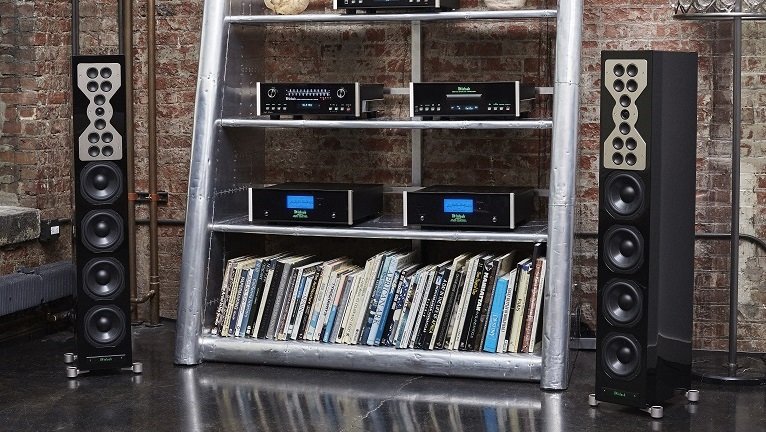Looking for a speaker that doesn’t take up too much floor space, plays really loudly and produces a bass response you can both hear and feel? You’ve come to the right place.
With the McIntosh XR100 4-way floorstanding speaker, you get knock-your-socks-off audio reminiscent of the Hi-Fi days of the 70s — all in a modern, sleek cabinet. Featuring four subwoofers that give incredible bass response, a single 3/4-inch dome super tweeter, and 10 2-inch midrange drivers, not a single sound is sacrificed. The XR100 also handles up to 600 watts of power, so you can go as loud as your heart desires — or as loud as your neighbors can stand — especially when paired with McIntosh's MA5200 integrated amp.
But when listening to the XR100 for the first time, you forget all about judging things like how deep the bass goes, or how smooth the highs are — you just get lost in the music. That’s what McIntosh sound is. It's not just Hi-Fi... it's more like a live musical event in your home.
For a full tour of the XR100 loudspeaker, join me in the video below:
Video transcript
When I got into the hi-fi industry in the 1970s, there were two basic kinds of speakers that music lovers bought. One type was a large cabinet, big woofers, capable of tremendous bass, could play very, very loud. And the second type tended to be more slender loudspeakers that were more of a delicate flower, but had extremely high detail to the sound.
Well, the first type of loudspeaker is almost extinct today. Especially with home theaters, manufacturers are trying to slim down all the loudspeakers so we can fit more of them in a room.
McIntosh said, "You know, there really is room in the market for a speaker that doesn't take up too much floor space that can still play really loud and give you the kind of bass response that you not only hear, but that you feel." So McIntosh developed the XR100 4-way floorstanding tower speaker.
The XR100, instead of using one gigantic woofer, uses four of their patented LDHP woofers. Each one is capable of very high output and together these four will give you incredible bass response down to 25 Hz in the bass that you can truly feel.
It has a super tweeter that's 3/4 of an inch, and that gives you incredibly wide dispersion. Everyone in the room hears crisp highs.
Now what to do with the mid-range? That's always the challenge in a loudspeaker that has really deep bass because these woofers can't reproduce mid-range. If the mid-range driver is very large, it becomes directional. If it's very small, it can't handle power. The solution was to use this array of mid-range drivers. So the upper mid-range, these two drivers work. And in the lower mid-range, these eight turn on. The combination of using so many drivers all together to share the power means that the power handling is astronomically high for a speaker this narrow.
This speaker will handle 600 watts of power. You can crank it up on a Saturday afternoon while no one else is in the house and bring back the 1970s if you want.
On the other hand, the imaging and the clarity of this speaker will compete with any modern loudspeaker out there. It has very crisp highs, great detail to the mid-range.
As a bonus, this loudspeaker is not particularly power hungry. You can use it with 40, 50 watts of power per channel, and for many users that'll be adequate. So we have a speaker that's easy to power, but will handle as much power as you want to give it, within reason, up to 600 watts.
Pretty darn compact in its floor space that it takes up, and yet sounds like a gigantic speaker. It's the XR100 from McIntosh. Get it online from World Wide Stereo or from one of our showrooms.

McIntosh XR100 4-Way Floorstanding Tower Speaker
Related Posts:
- Top 5 Features to Look For In Floorstanding Speakers
- Where Should You Place Your Tower Speakers For Phenomenal Sound?
- Review of the New Focal Chora Speakers
- Review: Reference Premiere II Speakers
- Review: Focal Chora 826-D Floorstanding Speakers
- Which Bowers & Wilkins D4 Speakers are Right for You?
- Best Home Theater Systems For Your Budget and Room Size
- How to Choose a Home Theater System

